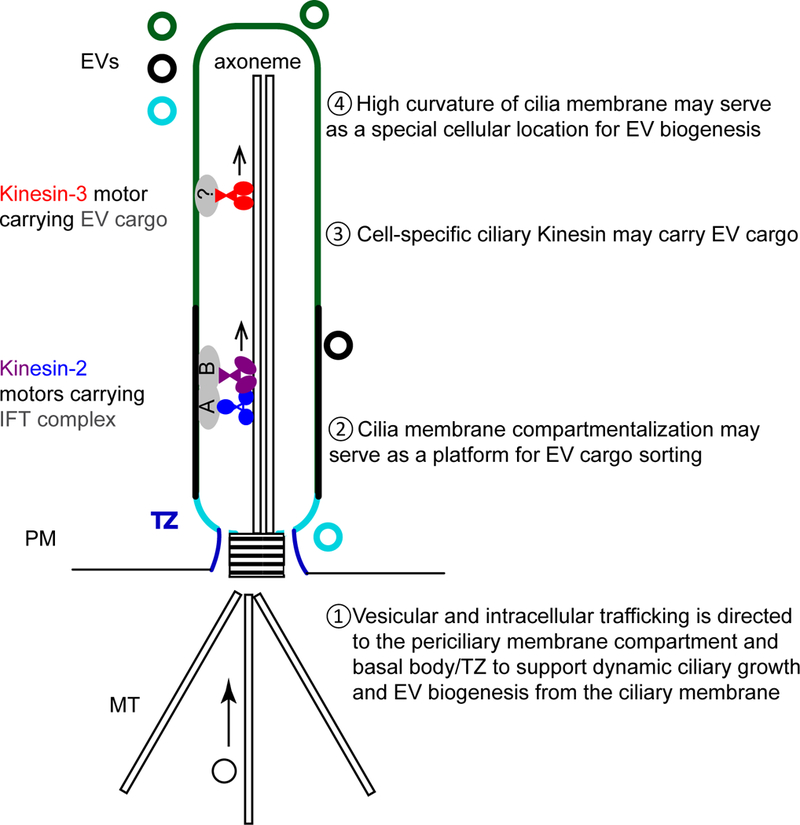Figure:

Model of the cilium as a special cellular device and location for EV biogenesis and shedding. Property 1: The cilium is derived from centriole and templated by the basal body/transition zone (TZ). In the periciliary region (cilia base), the basal body/TZ may direct vesicular trafficking necessary for ciliary membrane growth and EV biogenesis. Property 2: The ciliary membrane and axoneme are highly compartmentalized. The ciliary membrane is distinct from the plasma membrane and physically separated from the rest of the cell via TZ gating. Hence, the ciliary membrane may serve as EV cargo sorting platform. Property 3: All cilia possess canonical kinesin-2 motors that drive anterograde IFT transport and dynein motor mediated retrograde transport (not shown). C. elegans EV-producing neurons possess an additional cell-specific ciliary kinesin-3 that may be required for proper EV cargo sorting and/or for EV cargo transport. Property 4: The ciliary tip represents a highly curved membrane surface may also contribute to EV biogenesis. There are three possible sources of ciliary EVs: proximal (ciliary base, light blue), lateral (ciliary length, black), and distal (ciliary tip, dark green). The data-to-date favors that EVs are released from the ciliary base (light blue) and/or ciliary tip (dark green). Those EVs derived from the ciliary base may be exosomes arise from MVB exocytosis or from microvesicle budding near the TZ (light blue membrane and ciliary EV). Microvesicle/ectosome shedding occurs at the ciliary tip (dark green ciliary membrane and ciliary EV). Abbreviations: MT, microtubule; PM, plasma membrane; TZ, transition zone; IFT, intraflagellar transport.
